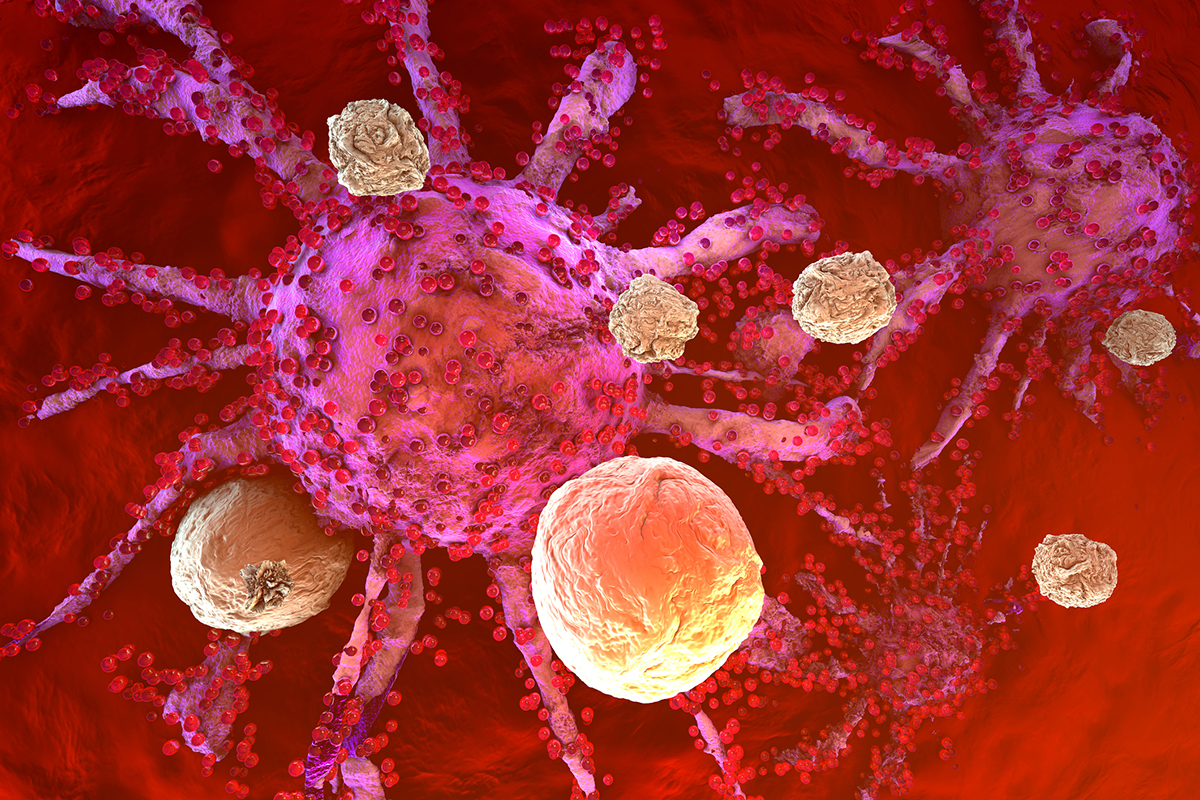
The term “immune system” is used quite a lot when discussing diseases, viruses, bacteria and other illnesses. Receiving a vaccine and overcoming an infection are two ways to make the immune system stronger, including as the body’s only natural defender against cancer.
Do you actually know what the immune system is and how it works?
The immune system is the body’s natural way of killing unwanted intruders or anything that poses a risk to your health.
More specifically, the immune system is a combination of cells, proteins and organs. Each part of the system plays a role in keeping you healthy. Your body’s biological function requires a delicate balance, and any disruption to that balance must be corrected by the immune system.
There are several key components to the immune system and the response your body has to diseases, including cancer. These components make up either the innate immune response or adaptive immune response. Innate immune response is a reaction to any abnormality in the body. Adaptive immune response is a reaction to a specific abnormality, usually based on proteins associated with the abnormality. Both innate and adaptive immunity can play a role in fighting cancer.
These components include a group of immune cells – T cells, NK cells, B cells, and dendritic cells – that can attack tumors and deliver information to each other, plus immune system organs like the spleen and the lymphatic system.
T cells
T cells are a type of white blood cell that protects the body from infection: bacteria, viruses and other unwanted intruders. T cells also fight cancer cells.
There are two main types of T cells: the helper T cell; and the cytotoxic T cell. Their roles are distinct:
- Cytotoxic T cells are active fighters and killers of infections and diseases
- Helper T cells act as supporters to the immune system
Cytotoxic T cells usually have the receptor CD8 on their surface, and these cells often are referred to as CD8+ T cells. Helper T cells usually have the CD4 receptor.
T cells can be used in cell and gene therapy to create chimeric antigen receptor (CAR) T cells or engineered T-cell receptor therapy (TCR). Both help the immune system fight cancer more effectively.
NK cells
NK cells, short for natural killer cells, are effector cells that respond to viruses and other diseases. NK cells join T cells in the fight against cancer.
The primary difference between NK cells and T cells is how they react to cancer. NK cells are part of the innate immune system, meaning they respond to any sign of something abnormal in the body. NK cells have a wider possible range of diseases they may confront.
T cells are part of the adaptive immune response, which means they respond to specific irregularities based on the proteins.
NK cells are also being developed as promising cell and gene therapies. For example, CAR NK therapy adds a lab-created protein receptor to NK cells, which are re-trained to more quickly find cancer cells.
B cells
B cells are a type of white blood cell that develops from stem cells in bone marrow. B cells, which are also part of the adaptive immune response, create a type of protein called antibodies that fight viruses and bacteria. These antibodies bind to unwanted foreign substances to kill them or stop them from infecting healthy tissue.
The antibodies created by B cells can bind to cancer cells to neutralize them. B cells can also promote tumor killing by NK cells, cancer cell ingestion by macrophages another type of immune cell, and the priming of CD4+ and CD8+ T cells.
Dendritic cells
T cells cannot bind directly to antigens on cancer cells. They need broken-down peptides of the antigen presented to them – like fingerprint evidence – which is done by a type of cell called dendritic cells.
Dendritic cells work as antigen-presenting cells serving as the “middle man” or “messenger” within the immune system. They are integral to T cells – or even CAR T cells or other cell and gene therapies – identifying and finding cancer in the body. They can infiltrate tumors and then flag them for the immune system.
Dendritic cell therapy that adds more dendritic cells or enhances the dendritic cell population is a promising area of cancer cell and gene therapy research. More or smarter dendritic cells can help the immune system respond to cancer cells more effectively.
Lymphatic system
The lymphatic system includes lymph nodes, lymphatic tissue and organs, and vessels. The lymphatic system is our body’s filter system. It drains unwanted fluids, such as those leaking from blood vessels.
Lymph nodes connect the different parts of the lymphatic system via lymphatic vessels. The vessels serve as a highway for fluid and white blood cells (T cells and B cells) to quickly move to different areas of the body.
Spleen
The spleen is a small organ just above the stomach in your abdominal cavity. The spleen is inside your left rib cage and is part of the lymphatic system.
The spleen’s main functions are to:
- Filter out waste or faulty white and red blood cells from your blood
- Make white blood cells (T cells and B cells)
- Help B cells create cancer-fighting antibodies
- Maintain the fluid level in your body
These are the main components of your immune system. Please continue to read blogs and articles on Alliance for Cancer Gene Therapy’s news section to stay up to date on understanding how cell and gene therapy holds curative potential for treating cancer. You can also sign up for ACGT’s email list for monthly newsletters about cell and gene therapy.
By focusing on radical new cell and gene therapies that leverage the body’s own biology and immune system, we can control and ultimately eradicate cancer.



